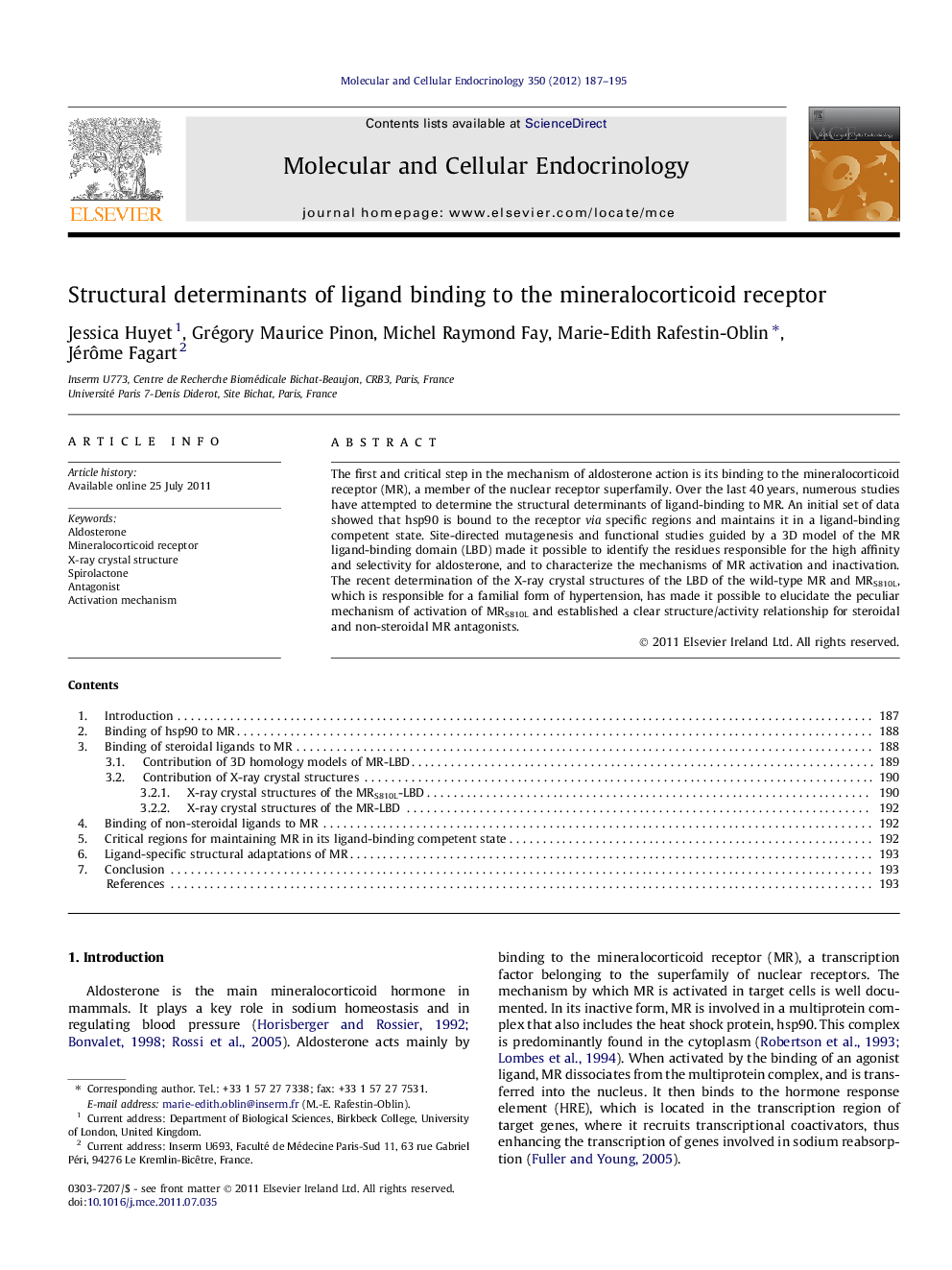| Article ID | Journal | Published Year | Pages | File Type |
|---|---|---|---|---|
| 2196380 | Molecular and Cellular Endocrinology | 2012 | 9 Pages |
The first and critical step in the mechanism of aldosterone action is its binding to the mineralocorticoid receptor (MR), a member of the nuclear receptor superfamily. Over the last 40 years, numerous studies have attempted to determine the structural determinants of ligand-binding to MR. An initial set of data showed that hsp90 is bound to the receptor via specific regions and maintains it in a ligand-binding competent state. Site-directed mutagenesis and functional studies guided by a 3D model of the MR ligand-binding domain (LBD) made it possible to identify the residues responsible for the high affinity and selectivity for aldosterone, and to characterize the mechanisms of MR activation and inactivation. The recent determination of the X-ray crystal structures of the LBD of the wild-type MR and MRS810L, which is responsible for a familial form of hypertension, has made it possible to elucidate the peculiar mechanism of activation of MRS810L and established a clear structure/activity relationship for steroidal and non-steroidal MR antagonists.
► Importance of hsp90 for ligand-binding competent state of mineralocorticoid receptor. ► Activation of mineralocorticoid receptor based on structural approaches. ► Steroidal and non-steroidal antagonists of mineralocorticoid receptor.
